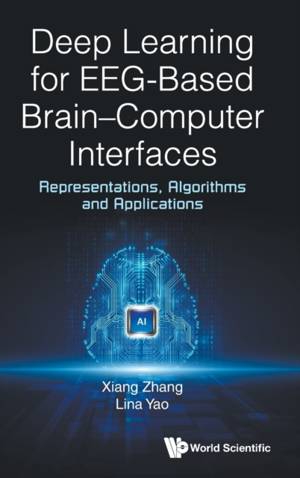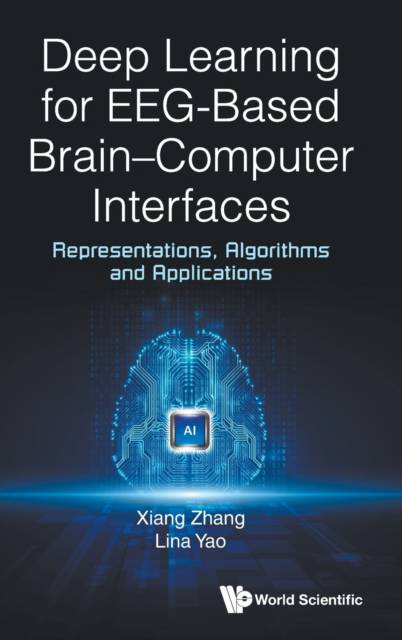
- Afhalen na 1 uur in een winkel met voorraad
- Gratis thuislevering in België vanaf € 30
- Ruim aanbod met 7 miljoen producten
- Afhalen na 1 uur in een winkel met voorraad
- Gratis thuislevering in België vanaf € 30
- Ruim aanbod met 7 miljoen producten
Zoeken
Deep Learning for Eeg-Based Brain-Computer Interfaces: Representations, Algorithms and Applications
Representations, Algorithms and Applications
Xiang Zhang, Lina Yao
Hardcover | Engels
€ 149,95
+ 299 punten
Omschrijving
Deep Learning for EEG-Based Brain-Computer Interfaces is an exciting book that describes how emerging deep learning improves the future development of Brain-Computer Interfaces (BCI) in terms of representations, algorithms and applications. BCI bridges humanity's neural world and the physical world by decoding an individuals' brain signals into commands recognizable by computer devices.This book presents a highly comprehensive summary of commonly-used brain signals; a systematic introduction of around 12 subcategories of deep learning models; a mind-expanding summary of 200+ state-of-the-art studies adopting deep learning in BCI areas; an overview of a number of BCI applications and how deep learning contributes, along with 31 public BCI data sets. The authors also introduce a set of novel deep learning algorithms aimed at current BCI challenges such as robust representation learning, cross-scenario classification, and semi-supervised learning. Various real-world deep learning-based BCI applications are proposed and some prototypes are presented. The work contained within proposes effective and efficient models which will provide inspiration for people in academia and industry who work on BCI.Related Link(s)
Specificaties
Betrokkenen
- Auteur(s):
- Uitgeverij:
Inhoud
- Aantal bladzijden:
- 296
- Taal:
- Engels
Eigenschappen
- Productcode (EAN):
- 9781786349583
- Verschijningsdatum:
- 1/10/2021
- Uitvoering:
- Hardcover
- Formaat:
- Genaaid
- Afmetingen:
- 152 mm x 229 mm
- Gewicht:
- 562 g

Alleen bij Standaard Boekhandel
+ 299 punten op je klantenkaart van Standaard Boekhandel
Beoordelingen
We publiceren alleen reviews die voldoen aan de voorwaarden voor reviews. Bekijk onze voorwaarden voor reviews.








